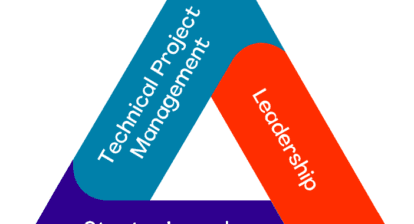Here’s what I remember of my experience in tackling the Project Management Institute’s (PMI)® Scheduling Professional (PMI-SP)® exam: sitting in a room full of stressed out people, an urgent need to run to the restroom, frantically watching the clock countdown, wracking my brain to come up with knowledge and details that I don’t recall ever learning in the first place. Sound like a journey you’d like to take too? Keep reading.
Once I learned I had been picked to be the “guinea pig” for the PMI-SP® credential at my company, I diligently began my process of getting ready. Of course, that included downloading the relevant handbook and working on the application.
My study partner, Prakash Vaidhyanathan, had a rude jolt upon receiving the PMI® Scheduling Professional (PMI-SP)® Exam Specification Guide that’s available from PMI for around $35. The specification guide contained about 15 pages and appeared to have very little information about the credential. Since we had both already earned our Project Management Professional (PMP)® certifications, we assumed the process for this certification would be similar. (More on that in Part 3!)
Once I knew I’d be taking the test, the first stop was filling out the PMI-SP® application, which requires you to prove you meet the certification criteria (covered in Part 1 of this series). You have two options: You can fill it out online or go the paper route. Based on tips I could glean from various sources, I believed the paper application was the best way to go.
While working on the application, of course, I had numerous questions, so I figured calling PMI was the most efficient route for getting answers. Not really. The person who answered the phone read from a script of questions and answers that were available on the website and couldn’t provide any additional information. During the process of gathering information, I decided just for the heck of it to glance at the online application to see how it compared with the paper application. As it turned out, this was the way to go. The online application had lots of limitations on word count, and I only had to provide a summary of my scheduling experience for each project instead of a detailed document that the paper-based application seemed to want.
Thinking that I would be able to complete my online application in one day turned out to be wishful. The application had four major sections requesting various information about contacts, certifications, education background, and scheduling experience. Back in my PMP® days, all you had to do was indicate your supervisor’s name on the application. With the new online application you actually have to provide current contact information. Tracking down people who have moved proved especially challenging. At the same time I figured I’d better ask for their permission just in case I got audited. Asking for permission was a good idea, but it also meant that these people were going to check up on me to make sure I got certified. (Does the term “peer pressure” mean anything?)
I made it through the application process. Pretty soon I started getting hounded with emails asking me to pay my fee. I was under the impression that if I didn’t pay the fee, my application would get cancelled. (I recently spoke to another candidate who had waited a few months before paying the fee on another credential without any problem.)
My study partner Prakash said he’d wished that he had taken the exam earlier as there was a two-month (early bird) 50-percent discount offer that PMI had announced in June 2008, which would have saved my company a few dollars.
Eventually, I was approved to take the test. But no sooner had I tried to register for the exam when Prometric, the testing company, rejected my “authorized number,” which meant I had to call PMI. Incidentally PMI mentioned that I should have received an email asking me to wait 48 hours before registering for my exam. Believe me: I had read every email PMI sent to me relating to this exam and not one of them mentioned the need to wait before registering for the exam. (I guess it has something to do about a project manager’s skill in being detail oriented.)
Finally, it was time to study. More about my preparation process in part 3 of this article.
Before I took the exam, I figured I’d better check up the exam site. Hoping to bring my favorite calculator and comfortable pen, I soon found that I would be forced to use an online calculator and the testing center’s pencils and papers. Thank goodness, I made a second phone call about my identification. In the State of Michigan, when you renew your license, they cut the corner off and give you a sheet a paper that indicates you have requested a renewal. Although this is the correct procedure, it meant my ID had been “defaced” and couldn’t be used as identification at the testing center. Knowing this in advance, I brought along my passport.
Getting started with the test seemed fairly normal except that as soon as I sat down, I wanted to do a “brain dump” just like I did for my PMP®. However, the exam administrator came in and told me I had a minute to start my exam. Evidently I missed my first “attempt” to start the exam and if I missed another one, I would be asked to leave. So, I started what turned out to be the exam tutorial on how to answer questions.
Tip: Start the exam tutorial and do it quickly. Whatever time is on the clock is the only time you have to do a “brain dump” before the test automatically starts.
I experienced normal exam stress throughout. Once, I almost got kicked out because I took off my bracelet and watch, setting them on the table. (I was just trying to avoid making too much noise because they were up against the keyboard.) Wrong move! The exam administrator asked me to put them on or return them to my locker while my exam clock kept ticking.
Nearly running out of paper, and still unsure about a few questions, I finally clicked finish. Guess what? No exam result. Just an irritating survey about my exam feedback. Suppressing all my anxiety I completed the survey, and — Voila! My score report came up. Scrolling up and down I noticed words such as “proficient,” but couldn’t figure out if I had passed. Finally, I located the small word, “PASS,” and knew my ordeal was done.







